Canon EOS 5D Mark III Review
Canon EOS 5D Mark III Introduction
The EOS 5D Mark III is the latest full-frame DSLR from Canon. At 22 megapixels, it boasts the highest-resolution sensor among all Canon cameras and the latest 61-point autofocus system which is shared with the ultra-fast Canon EOS 1D X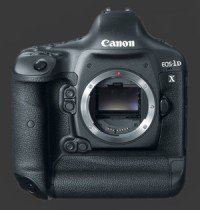
Canon EOS 1D X.
This is the third incarnation of the EOS 5D, the first full-frame Digital SLR without an integrated vertical grip, making it more compact and lighter than most competitors. The Mark III is refined evolution of the series and introduces plenty of state-of-the-art features like a dual-axis level, automatic HDR, multiple exposure and advanced HD video capture.
The all-new 22 MP sensor used in this digital camera is highly optimized for low-light performance and has an standard ISO range of 100 to 25600, expandable up to ISO 102400. This sensor can sustain continuous output at 6 FPS for a whopping 16270 JPEG images.
As a professional-grade DSLR, the 5D offers a sturdy weather-sealed body and a bright 100% coverage viewfinder, matching the cropped-sensor 7D and current competitors. Unsurprisingly, there are dual control-dials and a large number of external controls. There is also a class-leading 3.2" LCD with 1 megapixels and connections for a stereo sound input and output, HDMI output, an optional wired remote, plus both a sync-port and a hot-shoe for external lighting.
This review takes a close look at the Canon EOS 5D Mark III in terms of features, ergonomics, usability, performance and image quality.
Canon EOS 5D Mark III Key Features
Sensor
- 22 Megapixels Full-Frame CMOS sensor
- ISO 100-25600 Standard sensitivity
- Expanded ISO 50, 51200 & 102400
- Customizable Auto ISO parameters
- JPEG, RAW or JPEG+RAW Output
- Automatic sensor cleaning
Exposure
- PASM Exposure modes
- 1/8000s-30s Shutter-speed, plus Bulb
- EC, ±5 EV, 1/2 or 1/3 EV steps
- Multi-Segment, Center-Weighed, Partial & Spot metering
- AEB, 2-7 Frames, ±3 EV, 1/3 or 1/2 EV steps
- WB bracketing, 2-7 Fames, 3 step sizes
- ½ or 1/3 EV Exposure steps
- 1/3 or 1 EV ISO steps
Focus
- 61-Point autofocus, 5 double-cross and up to 41 cross-type points
- Automatic, Single PointPin-point (Spot) or Standard and Multi-Point5 or 9, Zone9 Zones focus-point selection
- Single-Shot, Continuous, Automatic or Manual focus-drive
- Tracking sensitivity, 5 steps
- Acceleration tracking, 3 steps
- AF-Point switching speed, 3 steps
- Contrast-Detect autofocus during Live-View
- Optional Autofocus Fine-Tuning
Drive
- 6 FPS Drive, Max 16270 JPEG or 18 RAW
- Self-Timer, 2s or 10s
- Wired remote terminal
- Mirror Lock-Up
- HDR from 3 frames, Auto, ±1, ±2 or ±3 EV
- Multiple-Exposure, 2-9 shots, Additive, Average, Bright or Dark blending
Images Parameters
- Automatic, Preset, Kelvin and Custom white-balance
- White-Balance fine-tuning, 2-axis, 19-steps
- Auto plus 6 Built-In Picture Style modes
- Sharpness, 8 steps
- Contrast, 9 steps
- Saturation, 9 steps
- Color Tone, 9 steps
- Optional High-ISO Noise Reduction, 3 levels
- Optional Long Shutter Noise Reduction
- Optional In-camera Vignetting correction
- Optional In-camera Chromatic Aberration correction
- Optional Highlight Tone Priority
- Optional Auto Lighting Optimizer, 3 levels
Viewfinder & Displays
- 100% Coverage viewfinder, 0.71X magnification
- 3.2" LCD, 1 megapixel
- Illuminated top LCD status displays
- Dual-Axis Digital-Level
- Optical DOF-Preview
Controls
- Dual control-dials
- Configurable AE-L button
- Configurable AF-On button
- Configurable M-Fn button
- 8-Way Joystick
- Configurable Lock slider
Body & Construction
- Canon EF lens mount
- Weather-sealed, resistant to dust and moisture
- Hot-Shoe & Sync-Port for external lighting
- Stereo sound mini-jack input
- Stereo sound mini-jack output
- NTSC/PAL Audio/Video output
- 1080i HDMI output
- Metal tripod mount
- Compact Flash memory slot
- SDXC memory slot
- Proprietary Lithium-Ion battery
- Connector for optional wired remote
- USB 2.0 connector
Video
- 1920x1080 @ 30 FPS
- 1280x720 @ 60 FPS
- Two compression levels
- Built-in mono audio capture
- External stereo audo capture
- PASM exposure modes
- Standard ISO sensitivity only

Canon EOS 5D Mark III Capability - What can it do?
The Canon EOS 5D Mark III is a professional grade DSLR with all features expected from its class and more. As all current SLR cameras, it supports interchangeable lenses with a full-frame Canon EF-mountAll Canon EF-mount lenses offer full-frame coverage but not EF-S lenses which are incompatible with the 5D Mark III. This gives it access to the most extensive lens lineup in the industry, including unique lenses like the widest current tilt-shift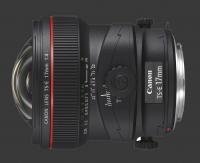
Canon TS-E 17mm F/4L, the only circular-to-rectangular fisheye zoom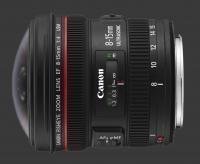
Canon EF 8-15mm F/4L Fisheye USM and the highest magnification macro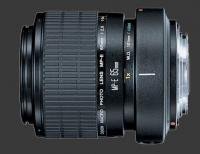
Canon MP-E 65mm F/2.8 1-5X Macro. Needless to say, full manual controls including manual focus, custom white-balance, spot metering and external lighting are all supported.
Those familiar with the EOS 7D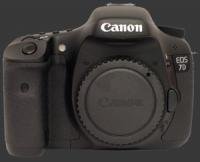
Canon EOS 7D or 5D Mark II
Canon EOS 5D Mark II should already know most of 5D Mark III's features and controls. Designwise, the 5D Mark III is closer to the 7D though. Like the other models in the 5D series, the Mark III does not include a built-in flash but it manages to fit a complete 100% coverage viewfinder like the one on the 7D.
With its 22 MP resolution, the Canon EOS 5D Mark III is suitable for producing high-quality prints up to 24" x 16" which exceeds the needs of most people. The ISO range which reaches a whopping 102400 when extended is highly suitable for hand-held low-light photography. With a top continuous drive of 6 FPS, this DSLR camera is good enough for all but the fastest action. This is paired with a new 61-point AF sensor which is detailed below.
The 5D Mark III adds a few convenience features. The most interesting one is the HDRHigh Dynamic-Range function that makes a tone-mapped image right in the camera. It takes a 3-frame AEB with 1, 2 or 3 EV steps and automatically aligns and blends them together. Source images can optionally be saved for software processing later. In a very nice touch, the Mark III provides 5 tone-mapping effects to produce the final HDR output.
There is also a Multiple Exposure mode. This lets the camera blend 2 to 9 exposures together with one of 4 blending modes. The neat thing is that results can be seen while images are added and the last step can be undone as desired, like Fuji's implementation. A person could easily do the same processing but it is more convenient to see the blending in the field and be sure the captured images work together. The 5D Mark III can optionally save original images for more sophisticated blending to be done later by software. The same is true of HDR, seeing that a bracket is perfectly captured ensures to have usable images later.
61-Point Autofocus System
The big feature of the 5D Mark III is its new 61-Point AF sensor which Canon also uses on its flagship 1D X
Canon EOS 1D X. It may be the most sophisticated autofocus system ever built and Canon dedicates an entire 5-page menu to it plus 45 pages in the user manual. Despite the complexity, there is a fully automatic mode which is usable with all AF-capable lenses and is always enabled in A+ mode.
This camera, like pretty much all Canon DSLRs, gives a choice of 3 focus drives: Single-Shot, AI Servo and AI Focus. Single-Shot corresponds to AF-S on other systems, meaning the camera locks focus on the half-press and waits the the shutter to be release. AI Servo corresponds to AF-C on other systems, so the camera starts focusing on the half-press and continuously does so until the shutter is released. AI Focus simply automatically switches between the other two modes depending on subject movement. Manual focus is possible too and is enabled by a switch on the lens. Otherwise, lenses with quick-shift AF can be manually focuses after focus at any time. AF can also be performed by the AF-On button instead of the shutter-release.
The complexity of this autofocus system comes from how points interacts with lenses of different maximum apertures. Optimally, there are 41 cross-type points which are sensitive to vertical and horizontal details. Five among those are double-cross type points which are sensitive to diagonal details. That leaves 20 linear AF-points.
Canon divides its current lens lineup in 8 groups depending on how the 61-Point AF system is able to focus with them. There are 41, mostly high-end lenses which take full-advantage of the 61-point AF system. There are six lenses which only support one double-cross point instead of five. The 61-points can also be used, albeit with less sensitivity, for 102 more lenses. A reduced number of points, 33 or 47 are usable by 26 more lenses and 2 lonely lenses can only use the center focus-point. Those keeping count will notice this is more lenses that are in Canon's current lineup but it includes older EF lenses and some used with teleconverters.

Autofocus tracking is controlled by 3 parameters:
- Tracking Sensitivity: Controls in 5 steps how fast the camera changes focus points. Lower values are used keep a subject in focus while obstacles temporarily block its view. Higher values keep up better with faster moving subjects.
- Acceleration/Deceleration Tracking: Controls in 3 steps how much a subject is anticipated to change speeds or stop moving. Higher should be used to track erratic motion but make the system less predictable with subjects moving at a constant speed.
- AF-Point Switching: Controls in 3 steps the balance between stability and tracking. Higher values cause the AF point to switch faster. Note that this only applies in point-selection modes where the camera is allowed to use more than one AF point.
For simplicity, the Canon EOS 5D Mark III provides 6 AF preset combination of these three parameters: Versatile multi-purpose (read Auto), Track subjects and ignore obstacles, Immediate focus, Track acceleration and deceleration, Track erratic movement and Track erratic acceleration/deceleration. Any of t these presets can be tweaked using the object 3 parameters.
There 6 AF-point selection methods which offer different balance between precision and speed of operation. At one extreme, AF-point selection is fully automatic. Or, one among the 61 points can be chosen manually with standard or pin-point accuracy. The latter is more precise. A point along with the 5 or 8 which surround it can be selected instead. Finally, the user can choose to focus on one of nine zones instead. Each zone has 9 or 12 points and zones overlap vertically.
Video Capture
One of the headline capabilities of the 5D Mark II was its full 1080p HD video capture. The 5D Mark III refines this further which is why there is already plenty of media coverage on its video features and performance. The basic specifications are a top resolution of 1920x180 at 30 or 25 FPS and 1280x720 at 60 FPS. There are two encoding levels for HD video: All-I and IPB. All-I means that each frame is completely encoded in the stream. IPB encodes some frames completely and others differentially which saves space but also reduces quality.
The 5D Mark III, like the Mark II before it, features full control over exposure during video capture using standard PASM modes. The full ±5 EV of Exposure-Compensation is also available during video capture. ISO is locked on Auto for all but Manual mode.
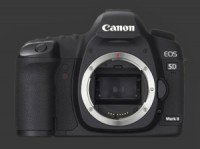 |
Please Support Neocamera
All information on Neocamera is provided free of charge yet running this website is a huge endeavor. Purchases made via affiliate links found throughout the site help keep it running and up-to-date. There is no additional cost to you, so please consider buying via these links to our affilates:
If you found any information on this site valuable and did not purchase via our affiliate links, please considering donating via PayPal:
Any amount will be greatly appreaciated. Thank you for your support!
Canon 5D Mark III Highlights

Sensor-Size: 36 x 24mm

Actual size when viewed at 100 DPI
| 22 Megapixels DSLR | ISO 50-102400 |
| Canon EF Mount 1X FLM | Shutter 1/8000-30s |
| 100% Coverage Extra Large Viewfinder | Full manual controls, including Manual Focus |
| 2 Axis Digital Level | Custom white-balance with 2 axis fine-tuning |
| Weatherproof | Spot-Metering |
| Built-in Dust Reduction | Hot-Shoe & Sync-Port |
| 6 FPS Drive, 16270 Images | Stereo audio input |
| 1920x1080 @ 30 FPS Video Recording | Lithium-Ion Battery |
| 3.2" LCD 1 Megapixels | Compact Flash Type 1, Secure Digital Extended Capacity |
Updates
2025.01.18

Fujifilm GFX 2025 Lens Roundup
Lens Review roundup of Fujifilm GFX Medium-Format lenses. Quality, performance and handling of the GF20-35mm F/4R WR, GF30mm F/3.5 Tilt-Shift and the GF55mm F/1.7.
2024.11.18

Best 2024 Photography Gifts for Every Budget
Great gifts for photographers and photo enthusiasts selected for every budget among the best products of 2024.
2024.08.07

Eye Protection Tips for Professional Photographers
The four main considerations for professional photographers regarding eyewear.
2024.07.14

Fujifilm X100VI Review
Flagship fixed-lens compact digital camera with a 40 MP sensor and Image-Stabilization, a first for the series. Retro design featuring dual control-dials, plus direct ISO, Shutter-Speed and EC dials. Its hybrid viewfinder can switch between EVF and OVF mode.
2024.05.09

Fujifilm GFX100 II Review
Flagship 102 Megapixels Medium-Format Mirrorless Digital Camera with 8-Stop 5-Axis IBIS, 8 FPS Drive, 8K Video and 400 MP Super-Resolution capture in a weatherproof and freezeproof body with dual control-dials and dual memory-card slots.
2024.04.03

Fujifilm X-T5 Review
Newest Fujifilm flagship boasting a 40 MP APS-C sensor, 5-axis IBIS with 7-stop efficiency, 15 FPS continuous drive, 6.2K Video capture, dual control-dials and dual SDXC UHS-II slots in a sturdy weatherproof and freezeproof body.
2023.11.20

Best Digital Cameras of 2023
Find out which are the Best Digital Cameras of 2023. All the new Mirrorless Digital Cameras from entry-level to high-end professional.
2023.07.10

Fujifilm X-H2 Review
40 Megapixels APS-C Hybrid Mirrorless Digital Camera with 7-stop IBIS. Fastest shutter ever and 8K video capture. Large builtin EVF with 0.8X magnification and 5.8 MP, plus an Eye-Start Sensor. Packed with features and large number of controls in a weatherproof and freezeproof body.
2023.05.07

Sony FE 20-70mm F/4G Review
Review of the unique Sony FE 20-70mm F/4G lens. The optical zoom of this lens spans ultra-wide-angle and medium focal-length coverage, making it one of the most versatile Full-Frame lenses on the market.
2023.01.15

Huion Inspiroy Dial 2 Review
Review of the Huion Inspiroy Dial 2 tablet, a medium sized drawing surface with dual dials and customizable buttons. Connects via USB-C or Bluetooth 5.0 with Windows, Linux and Android support.
2022.12.08

How to Pack for a Photo Trip
Find out how to pack for a travel photography trip, carry your gear safely while meeting airline regulations.
2022.11.13

Best Digital Cameras of 2022
The best digital cameras of 2022. A short list of the most outstanding models in their respective categories. Choose one for yourself or as a gift.














